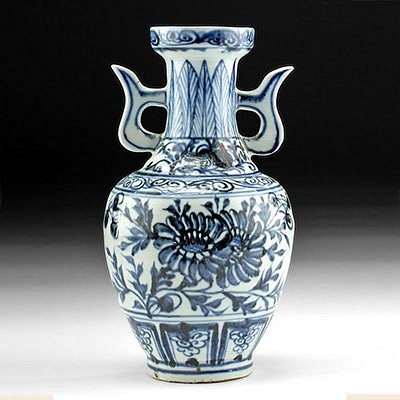Islamic Glazed Pottery Spice Jar
Lot 36b
About Seller
Artemis Gallery
686 S Taylor Ave, Ste 106
Louisville, CO 80027
United States
Selling antiquities, ancient and ethnographic art online since 1993, Artemis Gallery specializes in Classical Antiquities (Egyptian, Greek, Roman, Near Eastern), Asian, Pre-Columbian, African / Tribal / Oceanographic art. Our extensive inventory includes pottery, stone, metal, wood, glass and textil...Read more
Categories
Estimate:
$1,400 - $2,000
Absentee vs Live bid
Two ways to bid:
- Leave a max absentee bid and the platform will bid on your behalf up to your maximum bid during the live auction.
- Bid live during the auction and your bids will be submitted real-time to the auctioneer.
Bid Increments
| Price | Bid Increment |
|---|---|
| $0 | $25 |
| $300 | $50 |
| $1,000 | $100 |
| $2,000 | $250 |
| $5,000 | $500 |
| $10,000 | $1,000 |
| $20,000 | $2,500 |
| $50,000 | $5,000 |
| $100,000 | $10,000 |
| $200,000 | $20,000 |
About Auction
By Artemis Gallery
Nov 19, 2020
Set Reminder
2020-11-19 10:00:00
2020-11-19 10:00:00
America/New_York
Bidsquare
Bidsquare : Ancient Treasures & Holiday Jewelry
https://www.bidsquare.com/auctions/artemis-gallery/ancient-treasures-holiday-jewelry-6035
Travel around the world and back in time and be amazed at the treasures you will find! Antiquities from Egypt, Greece, Italy and the Near East, Asian, Pre-Columbian, African/Tribal/Oceanic, Native American, Spanish Colonial, Fine Art, much more. Shop early for the holidays! Artemis Gallery info@artemisgallery.com
Travel around the world and back in time and be amazed at the treasures you will find! Antiquities from Egypt, Greece, Italy and the Near East, Asian, Pre-Columbian, African/Tribal/Oceanic, Native American, Spanish Colonial, Fine Art, much more. Shop early for the holidays! Artemis Gallery info@artemisgallery.com
- Lot Description
Near East, Persia (Iran), Nishapur area, ca. late 10th century to early 13th century CE. A uniquely-shaped form, a group of four deep terracotta jars molded together. Each has a thick rolled rim. Four pointed projections and a deep depression at the center complete the piece. A pretty blue-green glaze covers all but the underside. In places, the glaze has gained a silvery iridescence. This item was probably used to hold condiments at the table like salt and spices. Size: 3.8" W x 2.3" H (9.7 cm x 5.8 cm)
Nishapur was a center of politics and culture in medieval Persia, and their pottery is some of the most unique and beautiful in history. Turquoise items like this example are the result of technological innovation at the end of the 10th century. They used an alkaline glaze with a copper base to give it its color and would pour it over the clay. These pieces may have been inspired by the blue and white glazed pottery that travelled the Silk Road from Tang Dynasty China, but the end result here transformed to an entirely different, radical style developed in Nishapur.
Provenance: private California, USA collection, by descent, moved from Germany in 1997, originally collected in the 1970s in Hamburg, Germany
All items legal to buy/sell under U.S. Statute covering cultural patrimony Code 2600, CHAPTER 14, and are guaranteed to be as described or your money back.
A Certificate of Authenticity will accompany all winning bids.
We ship worldwide and handle all shipping in-house for your convenience.
#155955Three small "feet" on the bottom are the result of the firing process and the mold used to make this item. Amazing craquelure on glaze. Intact, with great deposits and some iridescence.Condition
- Shipping Info
-
All shipping is handled in-house for your convenience. Your invoice from Artemis Gallery will include shipping calculation instructions. If in doubt, please inquire BEFORE bidding for estimated shipping costs for individual items.
-
- Buyer's Premium



 EUR
EUR CAD
CAD AUD
AUD GBP
GBP MXN
MXN HKD
HKD CNY
CNY MYR
MYR SEK
SEK SGD
SGD CHF
CHF THB
THB

















